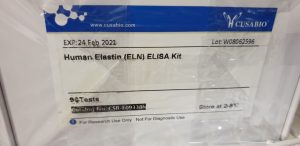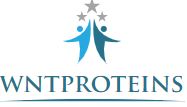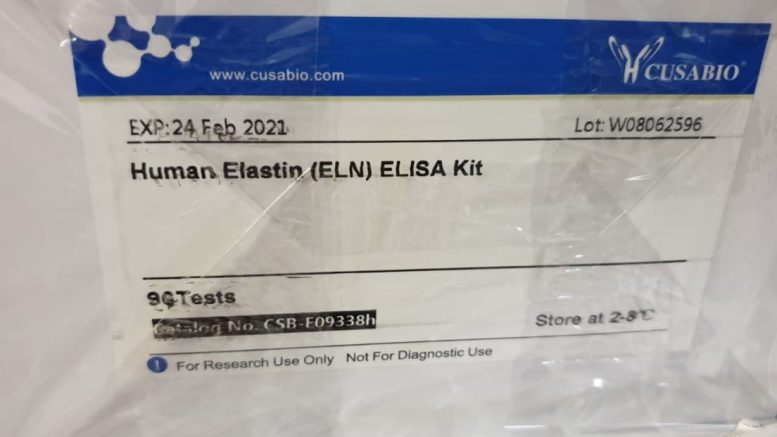The canonical Wnt pathway serves as a hub connecting numerous mobile processes, together with β-catenin signaling, differentiation, development, protein stability, macropinocytosis, and nutrient acquisition in lysosomes. We have proposed that sequestration of β-catenin destruction complicated components in multivesicular our bodies (MVBs) is required for sustained canonical Wnt signaling. In this research, we investigated the occasions that comply with activation of the canonical Wnt receptor Lrp6 utilizing an APEX2-mediated proximity labeling method.
The Wnt co-receptor Lrp6 was fused to APEX2 and used to biotinylate targets which are recruited close to the receptor throughout Wnt signaling at totally different time intervals. Lrp6 proximity targets have been recognized by mass spectrometry, and revealed that many endosomal proteins interacted with Lrp6 inside 5 min of Wnt3a therapy. Interestingly, we discovered that Trk-fused gene (TFG), beforehand recognized to manage the cell secretory pathway and to be rearranged in thyroid and lung cancers, was strongly enriched in the proximity of Lrp6.
TFG depletion with siRNA, or knock-out with CRISPR/Cas9, considerably lowered Wnt/β-catenin signaling in cell tradition. In vivo, research in the Xenopus system confirmed that TFG is required for endogenous Wnt-dependent embryonic patterning. The outcomes counsel that the multivesicular endosomal machinery and the novel participant TFG have necessary roles in Wnt signaling.
High-purity magnesium pin enhances bone consolidation in distraction osteogenesis by way of regulating Ptch protein activating Hedgehog-alternative Wnt signaling
Magnesium alloys are promising biomaterials for orthopedic implants as a result of of their degradability, osteogenic results, and biocompatibility. Magnesium has been confirmed to advertise distraction osteogenesis. However, its mechanism of selling distraction osteogenesis will not be completely studied. In this work, a high-purity magnesium pin developed and utilized in rat femur distraction osteogenesis. Mechanical check, radiological and histological evaluation urged that high-purity magnesium pin can promote distraction osteogenesis and shorten the consolidation time.
Further RNA sequencing investigation discovered that various Wnt signaling was activated. In additional bioinformatics evaluation, it was discovered that the Hedgehog pathway is the upstream signaling pathway of the various Wnt pathway. We discovered that Ptch protein is a possible goal of magnesium and verified by molecular dynamics that magnesium ions can bind to Ptch protein. In conclusion, HP Mg implants have the potential to boost bone consolidation in the DO software, and this course of may be by way of regulating Ptch protein activating Hedgehog-alternative Wnt signaling.

Tumor protein p53-induced nuclear protein 2 modulates osteogenic differentiation of human adipose derived stem/stromal cells by activating Wnt/β-catenin signaling
Human adipose derived stem/stromal cells (hASCs) are often used as seed cells in bone tissue engineering. These cells have good osteogenic properties in varied in vivo and in vitro fashions. Tumor protein p53-induced nuclear protein 2 (TP53INP2) regulates apoptosis, autophagy, and cell differentiation. However, whether or not TP53INP2 regulates osteogenic differentiation of hASCs has not been sufficiently studied.
Herein, we explored this subject utilizing siRNA experiments, osteogenic induction, quantitative real-time PCR (qRT-PCR) and western blot evaluation. We discovered that siRNA decreased mRNA ranges of osteoblast-specific genes in TP53INP2 cells. Western blots confirmed that RUNX2 protein expression decreased in siRNA-TP53INP2 cells at day 3, 7, and 21 after osteogenic induction.
The stage of β-catenin, LC3 and the LC3-II/LC3-I ratio in siRNA-TP53INP2 cells was decreased at day 3 and 7 after osteogenic induction. Further, therapy with lithium chloride (LiCl), an activator of Wnt signaling pathway, induced partial restoration of protein expression of β-catenin and RUNX2 (osteoblast-specific issue 2) in TP53INP2 knockdown cells. Collectively, these outcomes present that TP53INP2 promotes osteogenic differentiation of hASCs by activating Wnt/β-catenin signaling.
Nucleolar and spindle-associated protein 1 accelerates mobile proliferation and invasion in nasopharyngeal carcinoma by potentiating Wnt/β-catenin signaling by way of modulation of GSK-3β
Nucleolar and spindle-associated protein 1 (NUSAP1) is a pivotal tumor-related protein that has been implicated in the development of broad spectrum of tumors. However, no detailed research of the function of NUSAP1 in nasopharyngeal carcinoma (NPC) has been reported. The purpose of this work is to boost our understanding of NUSAP1 in the development of NPC. By analyzing information accessible inside the Oncomine database, we discovered that NUSAP1 expression was elevated in NPC relative to regular tissues.
Further, we confirmed that NUSAP1 expression in medical specimens of NPC and a number of NPC cell strains was elevated. Down-regulation of NUSAP1 by gene silencing markedly depleted the capability of NPC cells to proliferate and invade. Contrastingly, overexpression of NUSAP1 potentiated the proliferative and invasive talents of NPC cells. Further mechanistic analysis revealed that NUSAP1 knockdown decreased ranges of Wnt/β-catenin signaling in NPC cells by way of a mechanism related to downregulation of glycogen synthase kinase-3β (GSK-3β) phosphorylation.
However, suppression of GSK-3β markedly abolished the inhibitory impact of NUSAP1 knockdown on Wnt/β-catenin signaling. Further, inhibition of Wnt/β-catenin signaling partially reversed NUSAP1-mediated tumor development in NPC cells. In addition, NUSAP1 knockdown restrained tumorigenesis of NPC in vivo, and was related to down-regulation of Wnt/β-catenin signaling. In conclusion, these findings reveal that NUSAP1 is succesful of accelerating proliferation and invasion in NPC cells by potentiating Wnt/β-catenin signaling. Our research unveils a possible function of NUSAP1 in selling NPC tumors and means that the protein is a gorgeous antitumor goal for NPC therapy.
DNA replication and sister chromatid cohesion 1 promotes breast carcinoma development by modulating the Wnt/β-catenin signaling and p53 protein
The goal of this research is to evaluate the prognostic and practical function of DSCC1 in breast carcinoma, as nicely as the potential mechanism. Based upon the TCGA information, the expression sample and prognostic worth of DSCC1 in breast carcinoma was evaluated. The mRNA and protein ranges of molecules have been decided utilizing qRT-PCR and Western blot. In vitro practical function of DSCC1 in tumor cells was decided utilizing cell counting equipment 8, clone formation, and Transwell assays. Gene set enrichment evaluation (GSEA) was performed to find out DSCC1 associated gene units, that are additional confirmed by Western blot.
The outcomes confirmed that DSCC1 is overexpressed in breast carcinoma tissues and its excessive expression was linked to shorter general survival. Overexpression of DSCC1 facilitated the proliferation, invasion and migration of breast carcinoma cells, whereas knockdown of DSCC1 confirmed reverse outcomes. GSEA confirmed that prime DSCC1 expression had a constructive correlation with p53, and Wnt signaling-related molecules.
[Linking template=”default” type=”products” search=”antibody to or anti- Chinese Hamster Ovary Cell proteins antibody” header=”3″ limit=”166″ start=”4″ showCatalogNumber=”true” showSize=”true” showSupplier=”true” showPrice=”true” showDescription=”true” showAdditionalInformation=”true” showImage=”true” showSchemaMarkup=”true” imageWidth=”” imageHeight=””]
Western blot confirmed that silencing DSCC1 elevated the ranges of p53 and p-β-catenin, whereas decreased p-GSK-3β and cyclin D1 expression. These observations illustrate that DSCC1 emerges a nicely worth on the analysis and prognosis of breast carcinoma, and facilitates the development of breast carcinoma partly by activating Wnt/b-catenin signaling and inhibiting p53.

